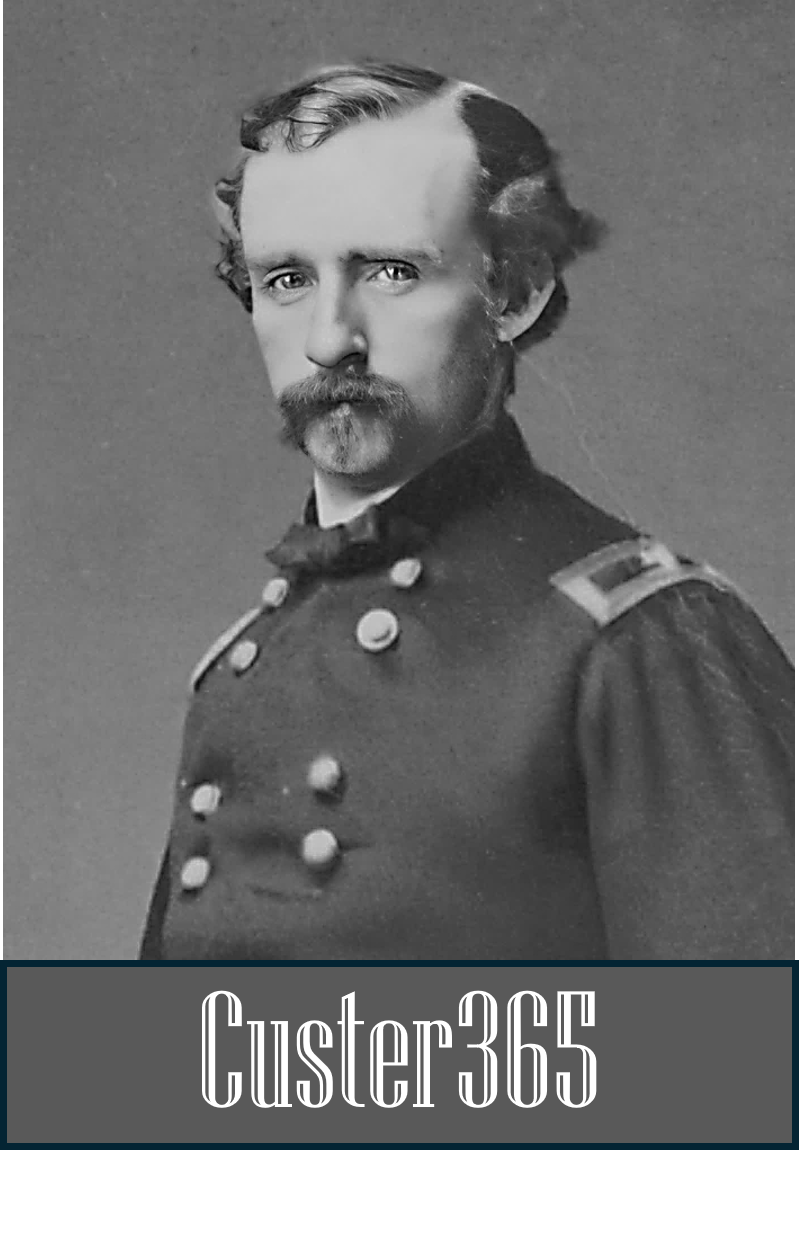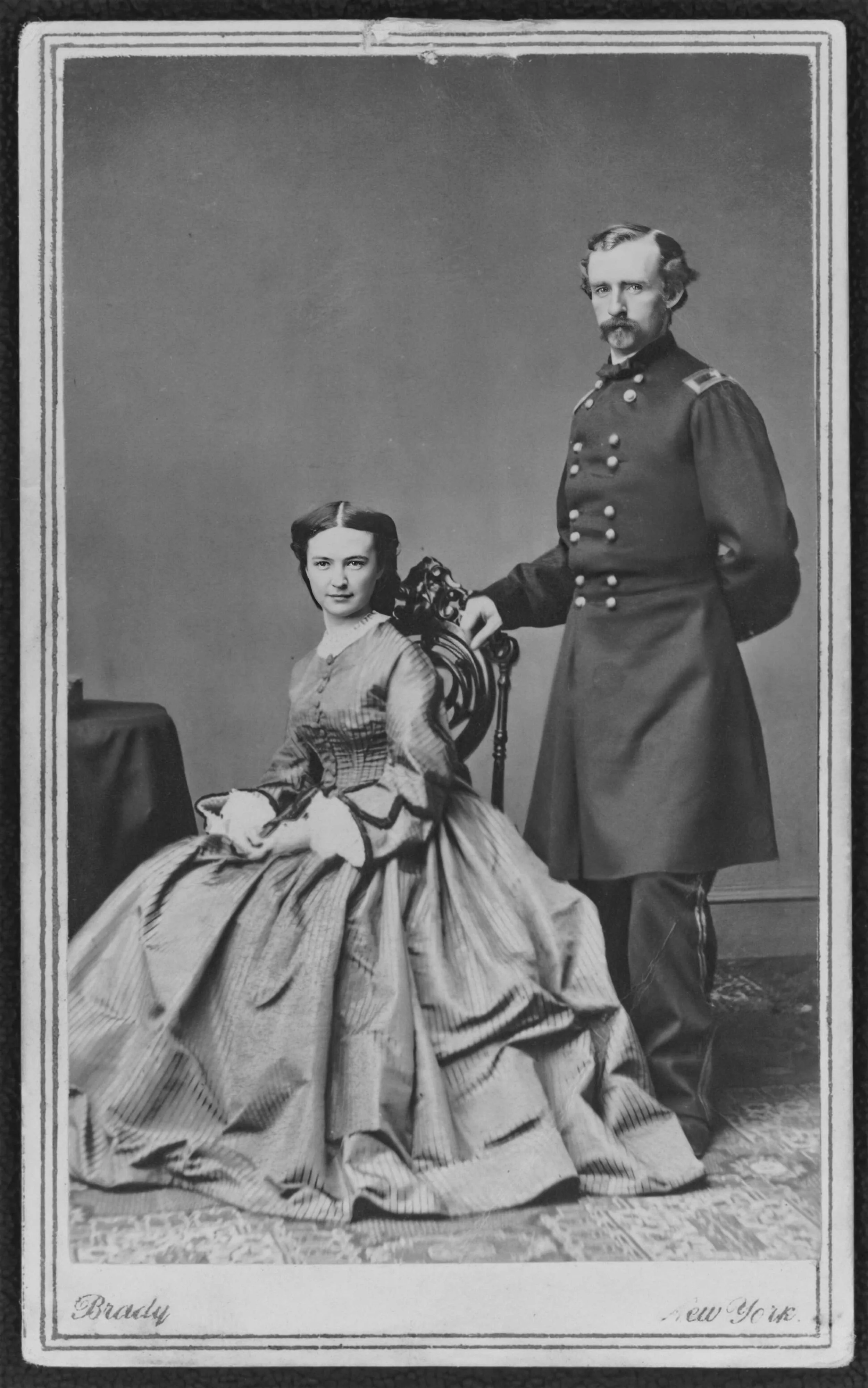JULY 6: The Mourning Begins
On this date in 1876, Elizabeth “Libbie” Custer, wife of George Armstrong Custer, is awakened at 7 a.m. by her cook at quarters she shares with Custer at Fort Abraham Lincoln in Dakota Territory. She puts on a dressing gown and walks downstairs to the parlor to meet Captain William McCaskey of the 20th Infantry, along with the post surgeon and another officer. Joined by her sister-in-law Margaret Calhoun and niece Emma Reed, Libbie listens stoically as McCaskey reads the dispatch he had received from Brig. Gen. Alfred Terry -- Lt. Col. George Armstrong Custer and every officer and man of five companies of the 7th U.S. Cavalry had been killed in battle at the Little Bighorn River on June 25, 1876.
Elizabeth Bacon “Libbie” Custer and her husband, George Armstrong Custer. (Credit: Library of Congress)
Libbie then asked for her shawl and accompanied McCaskey throughout the post as he informed the next-of-kin of other officers and enlisted men killed at Little Bighorn. She consoled the other widows and their families for hours.
George A. Custer and Elizabeth Clift Bacon were married on Feb. 9, 1864, at First Presbyterian Church in Monroe, Mich. Custer wore his newly issued Brigadier General’s uniform for the first time that day and his entire Army staff attended the ceremony. More than 300 people reportedly attended the reception. Libbie was 34 at the time of her husband’s death.
Of the 7th Cavalry’s 750 officers and enlisted men, 268 were killed and 62 wounded. They lost not only their leader, but almost half their officers and enlisted men in what was described as the most-devastating military loss in the history of the West.
The Bismarck Tribune published news of Custer's defeat. Its reporter, Marcus Henry “Mark” Kellogg, had joined the 7th Cavalry when it left Fort Lincoln on May 17, reportedly as a replacement for the newspaper’s editor Clement Lounsberry, whose wife had unexpectedly become ill. Kellogg died at Little Bighorn.
The news of Custer’s death and that of his men reached Gen. Philip Sheridan (top) and Gen. William T. Sherman (bottom) while both were attending the nation’s Centennial Exposition in Philadelphia. (Photo credit: Library of Congress)





